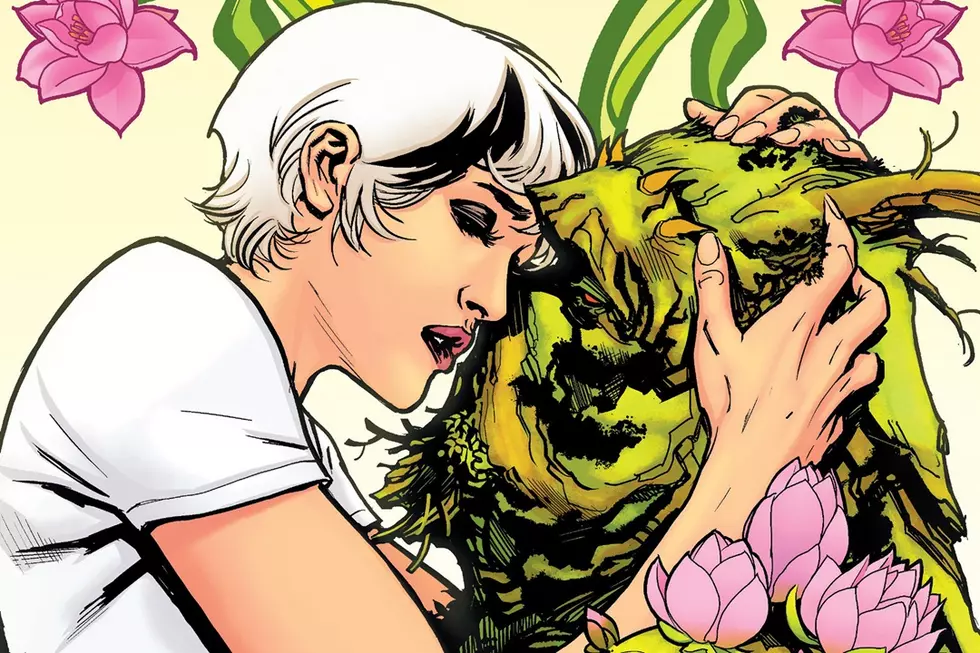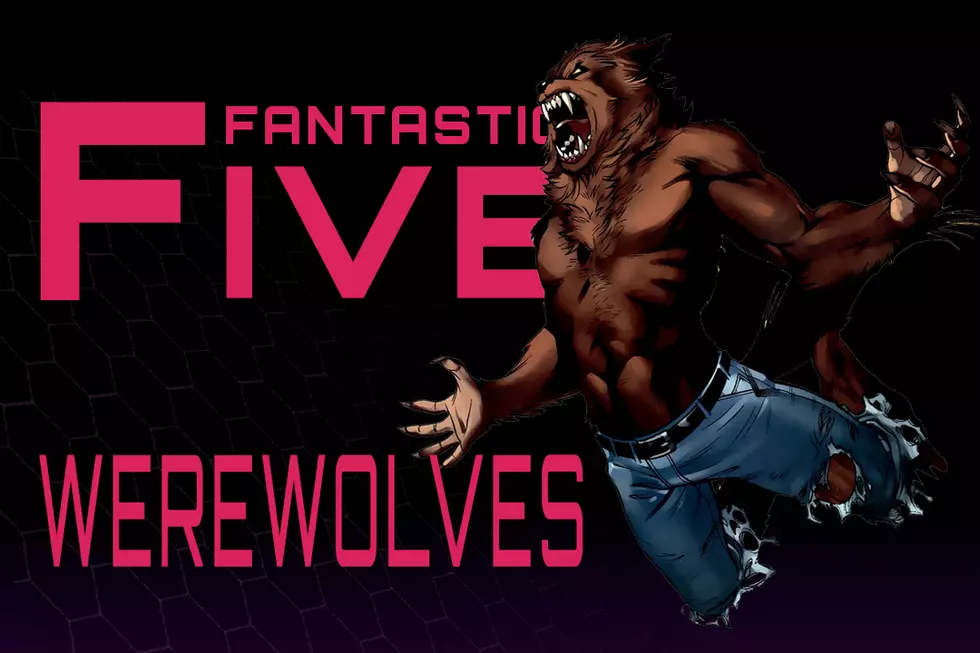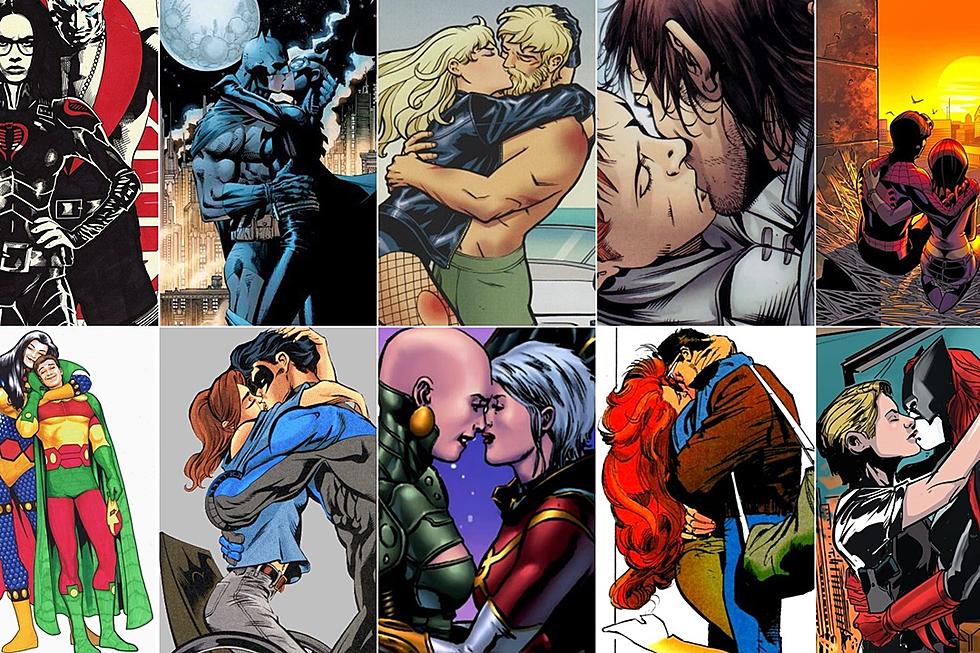
Fairy Tale Faceoff: Disney vs. ‘Fables’
 Since its debut in 2002, Bill Willingham's "Fables" has been the flagship title of the Vertigo imprint, spawning a successful ongoing spin-off, an Eisner award-winning original graphic novel, an upcoming mini-series and, most recently, the original prose novel "Peter and Max," which delves into the story of the Peter Piper.
Since its debut in 2002, Bill Willingham's "Fables" has been the flagship title of the Vertigo imprint, spawning a successful ongoing spin-off, an Eisner award-winning original graphic novel, an upcoming mini-series and, most recently, the original prose novel "Peter and Max," which delves into the story of the Peter Piper.
The idea of fairytale characters exiled into the real world appeals to readers because of their familiarity with the characters -- or at least the kid-friendly version from Disney. But how would the Vertigo revamps stack up against their all-ages counterparts? We've asked Invincible Super-Blogger Chris Sims to put some of our favorite Fables against their Disney counterparts for a head-to-head comparison to find out!
When you get right down to it, the Prince Charming of Fables is sort of a total bastard. A three-time divorcee due to his rampant womanizing (his wives being, in order, Snow White, Sleeping Beauty, and Cinderella, with assorted dalliances during and after), Charming nevertheless turns out okay in the end, first as a surprisingly adept Mayor of Fabletown and later as a genuine war hero who sacrificed his own in battle against the Fables' mysterious adversary.
Disney's Prince Charming, on the other hand, is barely a character at all. The only thing we know from his appearance in "Cinderella" is that he's got a bit of a foot fetish and has no time for uggos.
Advantage: Fables

Between the "Fables" version's duties as Director of Operations for Fabletown, a jealous sister who occasionally actively wants her dead and the Disney Princess's problems with a wicked stepmother with a smack-talking magic mirror and a penchant for poison apples, both takes on Snow White have a lot to worry about.
Their major difference comes in who they spend their time with: Fabletown's Snow lacks the seven dwarfs of Uncle Walt's first feature, instead finding herself in charge of seven flying, shape-changing children thanks to her romance with Bigby Wolf. Plus, she once got shot in the head with a sniper rifle and made a full recovery, which is something you just don't see a lot in the Wonderful World of Disney.
Advantage: Fables

They may have gone through the same boredom-induced trip through a surreal world of hookah-puffing caterpillars, fastidious rabbits and decapitation-crazed royalty, but Disney's Alice certainly comes off better in the end. She gets to go home having learned a lesson about the necessity of logic and reason, while her Fables counterpart gets locked up in the "Golden Boughs Retirement Home," a community for Fables that have undergone extreme revisions, where she has to fend off the advances of the amorous Wicked John.
But the fact that neither one had to deal with the sheer Lovecraftian horror of Carol Channing means they're both winners in our book.
Advantage: Disney

The Big Bad Wolf, as seen in Disney's 1932 short, "The Three Little Pigs," is basically just a hobo who really wants some pork chops, and while he's ostensibly the villain of the piece, who among us can fault him for that?
Bigby Wolf, on the other hand, may be a pretty slovenly dresser, but he's also a shapeshifting badass who once fought Frankenstein's Monster and ripped its head off with his bare hands. He and the head remain good friends.
Advantage: Fables

On the flipside of the story are the Three Little Pigs, who shared the... well, let's just call it "interesting" silly-hat-plus-no-pants style of dress so common among Disney's animals. Meanwhile, the pigs in Fables not only opted to go completely nude, but turned from building houses to building a new society with an ill-fated Orwellian revolution.
So yes, Disney's Three Little Pigs may have lacked the vision and concern for the worker compared to the ones in "Fables," but at least they didn't get their heads chopped off.
Advantage: Disney

Disney's Cinderella was the rags to riches story that not only inspired one of the most memorable bits of Caddyshack, but also taught stepdaughters everywhere that hating their new mom was a perfectly natural thing to do.
By the time she gets to "Fables," Cinderella has taken her knack for adapting to new situations (she does, after all, go from scullery maid to convincing princess in the span of one night) and put it to good use as Fabletown's top spy, even going so far as to disable a gun-toting assailant with -- what else? -- one of her shoes.
Advantage: Fables

The "Fables" and Disney versions Mowgli, Baloo, Shere Khan and the rest of the cast of The Jungle Book differ from each other more than any other group we've talked about, and surprisingly, it's not because of Disney's usual style of cleaning up the source material. Instead, it's what came after.
"Fables" sees Shere Khan and Bagheera as revolutionaries in the Three Little Pigs' rebellion, which leads to Shere Khan being taken out by a pistol-packing Snow White and Baloo dancing on his grave for a week straight (one show per evening with a Sunday matinee). And if you think that's weird, then you've never seen TaleSpin.

As part of an early '90s television block called the Disney Afternoon, "TaleSpin" took the characters from "The Jungle Book" and, as you might expect from source material rooted in allegorical tales of the Indian jungle, transplanted them into an ersatz 1930s, with Baloo as a cargo pilot for hire engaging in Indiana Jones-style adventures involving air pirates and Shere Khan as a sinister business mogul.
While awesome, it's worth noting that cartoons in the early '90s were completely insane.
Advantage: Disney

Despite a shared color scheme, the Genie from "Fables" is a far more sinister monster than his friendly Disney counterpart, and is both manipulated into defying (and slowly murdering) his master and--in a crucial difference to the events of "Aladdin" -- is not freed, but remains enslaved and trapped in his bottle.
He is also not voiced by Robin Williams.
Advantage: Fables
Final Tally: Fables 5, Disney 3!
We've put Fables on top, but there are plenty of other characters to talk about. Got some thoughts on Beauty and the Beast? Would Walt's tag-team of Gepetto and Pinocchio take out Willingham's? Let us know what you think in the comments!
More From ComicsAlliance








![Now The World Is Ready For You: DC Digital Announces ‘Wonder Woman ’77’ [NYCC]](http://townsquare.media/site/622/files/2014/10/ww-hed.jpg?w=980&q=75)
